|
Posted by Michael Pinto on Apr 30, 2015 in Animation, Anime, Cinema, Comic Books, Design, Fandom, Hobbies and Collections, Horror, Podcasts, Pulp Fiction, Science, Star Trek, Star Wars, Tech, Television, Videogames 
I’m sorry to report that Fanboy.com is now on hiatus: We’re currently thinking of relaunching the site in the future, but for now no new stories will appear. We will still be posting links we love on a regular basis on our Facebook page so please keep in touch with us there.
I first registered this site on a lark in the 90s, but then started blogging almost 9 years ago in 2006 and found it to be a very rewarding experience. However after about 3,000 or so posts I got a bit burned out, however I was very lucky in that I found a few folks who were willing to put in the work to keep the site alive (namely Ben Huber, Bob Muir and Tim Sheehy) and to them I owe a great deal of thanks. I also would like to thank you the readers of this website for coming back to us over the past few years. In the meantime we’ll keep this site up for anyone who would like to see our old stories until further notice.
Posted by Ben Huber on Feb 16, 2015 in Science 
NASA’s Solar Dynamics Observatory celebrated its five-year anniversary on February 11th, and to celebrate they put together a video showing what they’ve been seeing as they watched the sun these past five years. There’s a highlight video too! Basically, if you ever wanted to stare into the sun for a while and not damage your eyes, these are the videos for you. “Capturing an image almost once per second, SDO has provided an unprecedentedly clear picture of how massive explosions on the sun grow and erupt,” says NASA. Praise the sun! Read more…
Tags: NASA, Space, Sun
Posted by Ben Huber on Feb 2, 2015 in Science 
Do you like cool space rockets? I sure do. Elon Musk’s SpaceX has been doing some amazing work with vertical takeoff and landing rockets (if you haven’t seen if before, watch it here — it’s awesome). Their next rocket, the Falcon Heavy, plans to launch later this year, and will land all three rockets back on the ground vertically. SpaceX has put together a CGI video showing off the entire plan, and well… I’m excited. This kind of engineering work always blows me away. I just hope everything works as intended! You might remember that recently their Falcon rocket test flight went awry after it ran out of hydraulic fluid earlier than expected. SpaceX has since remedied that issue, and I can’t wait to see the next test flight! Read more…
Tags: Elon Musk, Space, SpaceX
Posted by Ben Huber on Jan 2, 2015 in Science 
Electric cars are pretty cool, even if they aren’t quite mainstream yet. Real-life Tony Stark fellow Elon Musk has been doing some impressive work at Tesla over the past few years, trying to make the perfect electric car. He recently tweeted out another one of his ideas that they’ve been working on: an automatic charging cable that’ll come “out from the wall & connects like a solid metal snake. For realz.” Holy crap, that sounds terrifying and awesome at the same time. I imagine it’s based off of those cool robotic snakes. Automation taking care of everything is a little frightening, but pretty impressive, too! Read more…
Tags: Elon Musk, Telsa
Posted by Bob Muir on Dec 30, 2014 in Science 
Having to carry a ton of heavy fuel is one of the big problems with developing faster spacecraft. But what if that number could be made trivial? NASA has tested the “Cannae Drive,” an engine that doesn’t use propellant, based on the EMDrive, a drive which works by bouncing microwaves in an enclosed container to create thrust. The drive has little critical attention, which many pointing out how such an engine would violate the laws of physics, specifically conservation of motion. So far, China has tested their version of the EMDrive, but it was not well-reported due to skeptics. But now the US has succeeded as well.
Read more…
Tags: NASA, spaceships
Posted by Ben Huber on Dec 22, 2014 in Science 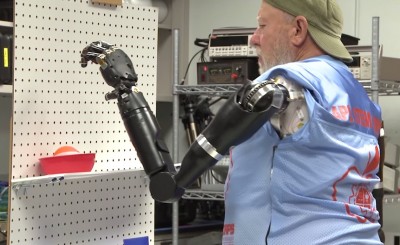
Last time we posted about robotic limbs, we saw an awesome prosthetic leg and a slick robotic hand and wrist combo. This latest project from Johns Hopkins University Applied Physics Laboratory features a full harness over a man named Les Baugh, replacing both of his full arms (which he lost in an electrical accident). This essentially gives him back both of his arms. This is a huge step and the fact that he’s controlling them simply by thinking is amazing. Just imagine how much more advanced these will be in just five years from now! What an incredible boon this’ll be for folks who have lost limbs. Video embedded below! Read more…
Tags: technology
Posted by Ben Huber on Dec 1, 2014 in Science 
In the future, we hope to colonize other planets, right? Going to Mars is the next goal, but even that seems so far away. But our imagination can be quite effective at inspiring us and getting there quicker, which is why I have loved the recent boom in space-themed movies, such as Gravity, Interstellar, and others. This short film by Erik Wernquist is an amazing look at how humanity might expand and live in the rest of our solar system. Perhaps most exciting: none of these places are made-up — they’re all real places that we could potentially go someday. Check out the video below. Make sure to open it in full-screen! Read more…
Tags: Short Films, Space, Space Exploration
Posted by Bob Muir on Nov 13, 2014 in Science, Tech 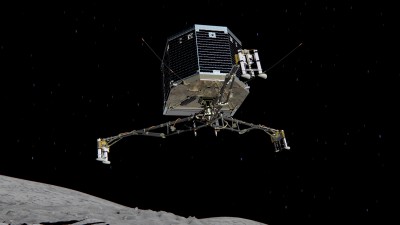
While probes have played around comets before, none have ever landed on a comet — until now. The European Space Agency is finally seeing the payoff for a mission they started way back in March 2004, when they launched the unmanned Rosetta spacecraft and its lander Philae. While the Rosetta met up with the comet back in July, it took weeks to fly around the comet and determine a safe place to land. Operations were complicated by the Rosetta having to travel over 6 billion kilometers to meet up with the comet’s path; at that distance, even light-speed transmissions take almost half an hour to reach Earth, so any control had to be calculated and input well ahead of landing. Despite some bumps (including the securing harpoons not firing, resulting in a bounce and a second landing), it seems Philae is running smoothly now and will be collecting data through about March 2015, when it builds up too much heat. The Rosetta will at least operate through December 2015, but could go longer if the fuel holds out. Congratulations, ESA! Now get some cool data! Read more…
Tags: Space, Space Exploration, spaceships
Posted by Ben Huber on Sep 22, 2014 in Science, Tech 
Yup, Oculus is still at it, and they’ve announced a new iteration of their Rift virtual reality headset. Once again, this isn’t the final consumer-ready version — it’s another prototype for developers to use to create games for the platform. This new hardware, named Crescent Bay, was announced at Oculus Connect, an official event set up by Oculus to give developers the chance to try the latest hardware and help them overcome any challenges VR might have. It features additional track sensors for a full 360 degrees of movement, a lighter design, an improved screen with less gaps between pixels, and integrated optional audio with 3D positioning. We’re getting closer and closer to consumer VR, and I’m so very excited. As you might guess, there’s no word on when the final version will come out, but so far 2015 seems a solid bet. Read more…
Tags: oculus rift, Virtual Reality
Posted by Bob Muir on Jun 3, 2014 in Science 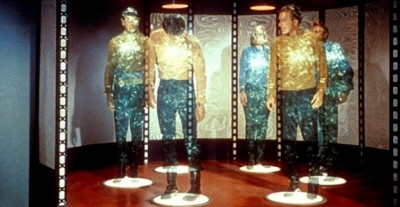
It looks like teleportation isn’t entirely outside the realm of possibility, according to a new scientific breakthrough. Scientists at Delft University have managed to teleport information encoded on sub-atomic particles to another place with 100% accuracy for the first time. According to Professor Ronald Hanson, who lead the team, we may one day be able to teleport a human as well. Hanson points out that we’re just a bunch of atoms arranged in a particular way, so if they can teleport a very small amount, there should be a way to teleport a large amount. Read more…
Tags: Teleportation
Posted by Bob Muir on May 27, 2014 in Science 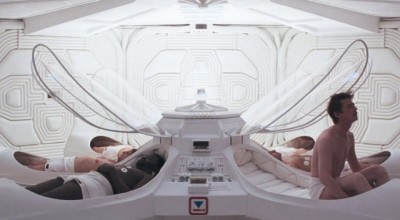
Suspended animation is usually stuck in the realm of science fiction, but some scientists are testing out a similar process. Because of the differences between what they’re doing and what we expect, they prefer to call it “emergency preservation and resuscitation.” Basically, their goal is to suspend life to keep patients alive during dangerous operations through the use of internal cooling. A patient’s blood is completely removed and replaced with a cold saline solution, slowing down metabolism and reducing oxygen needs. The body cools to about 50ºF, basically inducing hypothermia. This will supposedly help buy time for important surgery for patients suffering from a massive heart attack or a shooting. A heart-lung bypass machine restores blood circulation and oxygenation for resuscitation. Read more…
Tags: Science Fiction
Posted by Bob Muir on Apr 17, 2014 in Science 
It seems that Curiosity has a new, exciting mission. The Mars rover has arrived at the Kimberly and will be drilling below the surface. Why? Because of the harsh climate of Mars, any signs of organic life are difficult to find. Researchers are hoping that by going beyond the crust, they’ll be able to find other signs of organic life. Even if they don’t find anything, the researchers hope to discover more about what conditions were like in the past, in a time period when scientists believe life did exist. This isn’t the first time that Curiosity has drilled, but it’s the first time that it’s going below the surface, so hopefully the rover can discover something useful! Read more…
Tags: Mars, NASA
Posted by Ben Huber on Mar 17, 2014 in Hobbies and Collections, Science 
Man, there’s just a bountiful buffet of LEGO media online right now. Everyone wants to cash in on The LEGO Movie, I imagine. But here’s a world record LEGO robot — yes, robot — that is the fastest Rubik’s Cube ‘bot in the land. The machine is called the CUBESTORMER 3, and has obtained the world record for solving a Rubik’s Cube in 3.253 seconds. This beats out their previous record and robot, the CUBESTORMER 2 at 5.35 seconds. Not only that, it beat the world record for a human time, with is 5.55 seconds. That’s pretty impressive! Watch the LEGO machine go to work at lightning speed below. Read more…
Tags: Lego
Posted by Bob Muir on Feb 6, 2014 in Science, Tech 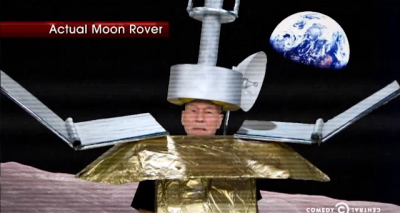
China put a rover on the moon called Jade Rabbit, which is all well and good — but it’s already having technical difficulties dealing with the moon’s atmosphere. That’s kind of a big problem if you want your rover to work on the moon. As night falls on the moon, China is trying to fix Jade Rabbit, but there’s a good chance that it won’t recover. The rover has been “writing” about its experiences in the Chinese media, and his latest entry is a sort of goodbye letter. How better to present this semisweet moment than dressing up Star Trek‘s Patrick Stewart as the rover and having him read the final lines? That’s what The Daily Show did. The whole segment provides good coverage of the incident, but you can skip to 4:50 if you just want to see Stewart in gold foil and styrofoam like some old Doctor Who monster. Read more…
Tags: Captain Picard, China, Moon, Space
Posted by Ben Huber on Feb 3, 2014 in Science 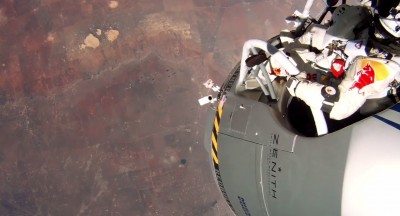
Over a year ago, Felix Baumgartner wowed people everywhere by leaping off a balloon that had taken him to stratospheric heights. He set three world records in one jump: first, for the highest manned balloon flight, second, for highest falling distance, and third, for falling speed as he broke the sound barrier — the first human to do so outside of a vehicle. GoPro has finally released footage from the cameras attached to Baumgartner’s suit — I’m not sure why exactly it took so long for this to come out — but it’s some freaking amazing footage. Watch the entire drop below! Read more…
Posted by Ben Huber on Nov 25, 2013 in Science 
Not everyone will be able to see an aurora borealis this easily in real life, but thanks to photographer Göran Strand you can view it in your browser anytime you want. Strand used a Nikon D3s to shoot over 2400 images with a spherical lense and then merged them together into a timelapse. Put together in a browser, you can spin the view around and catch every detail in a 360 degree panorama. It’s really impressive work. I’d love to see more of this kind of thing, where people take nature and landmarks not everyone can visit and make them freely available online. And once the technology improves enough, can you imagine looking at this stuff through an Oculus Rift? I bet it’d be stunning. Click here to visit the web page or watch the video below. Read more…
Tags: Photography
Posted by Bob Muir on Oct 9, 2013 in Science 
Congratulations, science! Nuclear fusion has always had an issue managing to create more energy than was put into it. You need to compress two lighter nuclei into one heavy nucleus, a change in mass that creates a lot of energy, but requires a lot of energy to make happen. But the National Ignition Facility (NIF) in the US has managed to compress hydrogen to the point of nuclear fusion at 3.3 million Kelvin (5.9 million degrees Fahrenheit). And for the first time, the energy released in the reaction exceeded the amount of fuel that went into powering the world’s most powerful laser rig and its 192 beams. Read more…
Tags: nuclear fusion
Posted by Ben Huber on Sep 29, 2013 in Science 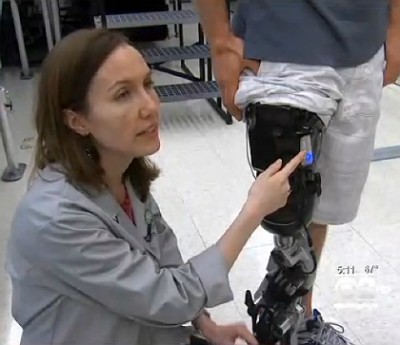
We’ve seen some huge strides in artificial limbs in the past few years, and we’ve blogged about them before, too. Here’s the latest one, a bionic leg for Zac Vawter, who lost most of his right leg in motorcycle accident in 2009. Now, he’s the first tester for an incredibly impressive bionic leg that is hooked up to the nerves in his leg. Now, he can walk almost as well as before the accident. I’m really excited to see the advancement in this tech, and I hope more people will support this kind of work. It’s groundbreaking stuff! Read more…
Tags: Bionics
Posted by Bob Muir on Sep 18, 2013 in Science 
We’ve known for a while now that antibiotics are being used far too often today. What may seem like a no-brainer is sometimes helping to cultivate strains of super-bacteria that have grown resistant to the drugs meant to kill them. According to a new report from the US Centers for Disease Control and Prevention, the situation is worse than we thought. Each year, over 2 million illnesses (which result in 23,000 deaths) are caused by antibiotic-resistant bacteria and fungi, costing billions of dollars more in healthcare and societal costs. As Dr. Tom Frieden, director of the CDC, puts it: “If we are not careful, we will soon be in a post-antibiotic era. And for some patients and for some microbes, we are already there.” Read more…
Posted by Ben Huber on Sep 7, 2013 in Science, Tech 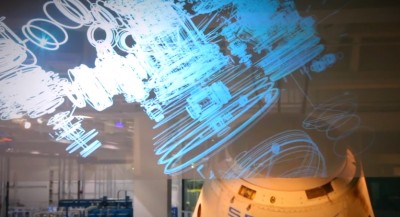
People have been making Tony Stark jokes about Elon Musk for a while now. At first it was just an amusing joke, but now it appears Musk is leaning into it. He’s been creating a virtual workshop not unlike what Stark uses in the Iron Man films to create his armor, using a combination of a Leap Motion controller, Oculus Rift, a projector, and Kinect. Reaching your hands out to control the positioning and shape of a 3D model on the screen is pretty neat, especially being able to view it with the Rift, but I wonder how quickly your arms will tire. Creating more intuitive interfaces is definitely worthwhile though, and I think stuff like this could really explode. Read more…
Tags: Elon Musk, SpaceX
Posted by Bob Muir on Aug 29, 2013 in Science 
We know that there might have been life on Mars, but could Mars have been responsible for the beginning of life on Earth, if new evidence is to be believed. Professor Steven Benner, a geochemist at the Westheimer Institute for Science and Technology, has posited that Martian meteorites thrown by volcanoes or impacts may have landed on Earth and acted as “seeds.” He argues that the oxidized mineral form of molybdenum, a building block necessary for life to grow, wasn’t present on Earth due to low oxygen levels three billion years ago. However, it was found on Mars, which had oxygen at one point. Meteorites carrying the element could have crashed on Earth, bringing the ingredient that may have helped tar form, which led to the first organisms. It’s an interesting thought, because if so, we could technically be part-Martian! Read more…
Tags: Mars
Posted by Ben Huber on Jul 7, 2013 in Science 
I’ve been fascinated by space travel since I was very young – especially the idea of space ships. It also makes me a bit depressed about the poor funding for NASA and general lack of public interest in space as a whole. Still, many out there share my enthusiasm and dwarf it with their efforts. Private companies like SpaceX have been doing amazing work to expand the industry and make space travel a viable thing. I was blown away by the video they uploaded recently featuring their Grasshopper rocket take off, then land… vertically. This is something that was previously declared “too difficult” or “too costly” but here it is. Check out the amazing video below. Read more…
Tags: Space, SpaceX
Posted by Bob Muir on May 29, 2013 in Comic Books, Science 
Zach Snyder’s Man of Steel is out on June 14, and besides the usual marketing, Gillette has a new tie-in campaign asking the question of how Superman manages to shave his beard. We know he has a beard earlier in the film, according to the trailer, but obviously Superman is clean-cut, so it has to be done somehow. While this has probably been explained several ways throughout the years, Gillette got several smart people to weigh in: Bill Nye (the Science Guy), Kevin Smith (nerdy director), Mayim Bialik (The Big Bang Theory), and Adam & Jamie (Mythbusters). Whose theory sounds the best? Read more…
Tags: Bill Nye, Kevin Smith, MythBusters, The Big Bang Theory
Posted by Bob Muir on May 14, 2013 in Science 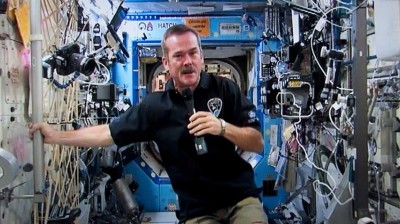
Canadian astronaut Chris Hadfield has been delighting the internet with his videos from space since he took over command of the International Space Station last December. Now, his time has come to an end and he is handing over control to Expedition 36, but not before recording and uploading one last video: a rather well-done cover of David Bowie’s “Space Oddity.” Read more…
Tags: David Bowie, International Space Station, Space
|
|






































